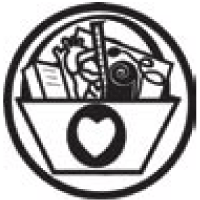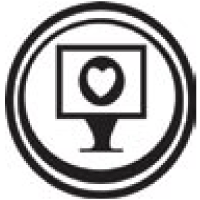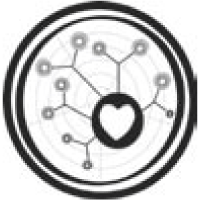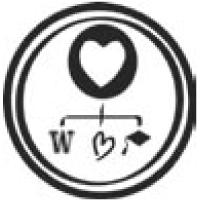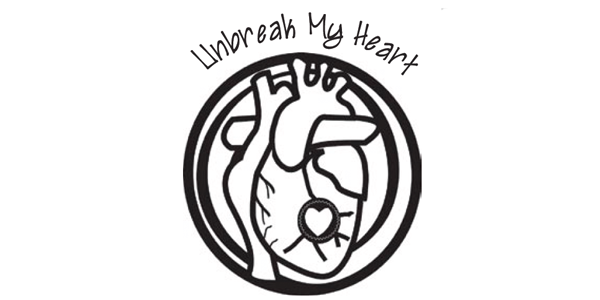Unbreak My Heart
Teacher Contributors: Stella Bass, Jennifer Stegeman, Heather Wright
Summary
- Big Idea: Bioengineering – Students investigate a heart problem case study, and subsequently create models of both the problem and a possible bioengineering solution.
- Type of Activity: Activity 1a (stand alone): Case study analysis of a heart problem
Activity 1b: Building models of problems and solutions
Activity 2 (stand alone): PowerPoint lesson on the broad field of bioengineering- Length of Activity: Activity 1a: 1 class period Activity 1b: 3 class periods Activity 2: 1 class period
- Group Size: Activity 1: 2-4 students per group Activity 2: Lecture and discussion activity
- Space Needed: Classroom
- Grades: Middle school (6-8)
Core Concepts:
- Bioengineering is the process of designing solutions to biological and medical problems. In this lesson, students learn about a heart problem, explore how to model a problem and use that model to develop a solution to the problem.
- Many students have knowledge of someone who has had an implant of some kind, such as a knee or hip replacement, bypass surgery, or pacemaker. However, students may not be familiar with the growing field of bioengineering. This lesson introduces students to bioengineering and allows them to explore a problem and create a solution. This can be based on previous knowledge and their own creative ideas. Ultimately, at the end of this lesson, students will have an understanding of bioengineering and how the field is improving the quality of life for those who experience heart related problems.
Preparation:
-
Materials: Materials listed here are suggestions for creating models of the heart, vessels, and biomaterials. Provide a list to students of what they may be able to use or borrow from your supplies. Students can be encouraged to bring other materials from home. (These should be items that they don't have to purchase.)
- Possible materials to model the heart : clay, turkey baster, balloons, fruit (orange, grape, lime kumquat, etc)
- Possible materials to model vessels : straws, plastic tubing, paper towel tubes, rigid plastic tubes, water bottle with ends cut off
- Possible materials to create biomaterials : balloons (long, skinny type and/or water balloon type), various types of glue, plastic wrap, paper clips, wire, popsicle sticks, Gore-tex (check your local thrift store for an old rain jacket to cut up, nylon (old pantyhose), sponge, cotton fabric, polyester (you may be able to acquire fabric swatches from a fabric store or by cutting up old clothing from a thrift store)
- Other materials that may be useful in this project : scissors, rulers, rubber bands, test tube cleaning brushes, water (with red food dye to make it look like blood)
-
Set-Up:
- Make copies of the Student Design Packet for each student.
- Gather potential materials. See materials list above for ideas.
- Look through PowerPoint Slides (if you do not have access to PowerPoint in the classroom, make copies of the presentation for students or print them on overheads). [Provide a link to this] The "notes" in the PowerPoint slides contain background information on bioengineering. (View (8) Notes Page) Print out notes pages, especially for the bioengineering background slides (#15-34).
- Safety Notes: Students will have an opportunity to work with various materials, and may need to use scissors.
Performing the Activity:
DAY 1: ACTIVITY 1A: PRECONCEPTIONS AND CASE STUDIES
Engage:
-
(Slide 1) How can human-made materials solve heart-related problems?
- If you wish, allow students to write in their journals in order to consider their preconceptions.
- Hand out Student Design Packets.
-
(Slide 2: Notes Page) Think of 3 words that begin with the prefix "bio."
- What do you think "bio" means?
- What do you think that the words "engineer" or "engineering" mean?
-
(Slide 3: Notes Page) Based on your answers, what do you think an "engineered biomaterial" may be?
- Using a T-chart, brainstorm with your elbow partner a list of possible problems and solutions you think bioengineers may have to design products for.
Explore:
-
Form groups of 2-4. Show the students the second page of the Student Design Packet. This illustrates the cycle that engineers use to design a solution to a problem. [Hyperlink to "Student Design Packet."]
- This packet, modified from worksheets from the University of Pittsburgh, provides step-by-step instructions for how to design an engineering solution to a problem. Please modify based on how much guidance your students need.
- (Slide 4: Case Study) Read through the case study in the Student Design Packet.
-
Discuss with the students the questions provided:
- What is the damage that needs to be repaired in this case study?
- What is a possible solution that could help to resolve the medical problem you identified?
-
(Slide 5: Create Design: Brainstorm)
- Students identify the problems in the case study.
- Students brainstorm possible solutions to this problem and choose one to focus on.
-
(Slide 6: Create Design: Illustration)
- Students identify materials necessary to model the problem and solution. Students will need to see a list of materials available to them from the classroom and consider bringing other items from home to support their project.
Optional: If you only have a day or two, you can show the Bioengineering PowerPoint and students can reflect on their design based on what they have learned about the real world of Bioengineering.
DAY 2: ACTIVITY 1B: BUILDING MODELS OF PROBLEMS AND SOLUTIONS
Possible Student Designs
You will see a lot of variance in student designs. Let them be creative, but make sure the solution helps meet the need. The model could be a heart with a hole in it, an artery with a hole in it, or both. A possible solution would be to create a material that will patch over the hole or plug the hole and integrate, or mesh, with the live heart tissue so that blood does not leak out when the pencil is removed. Students may also create the tool that a surgeon would use to apply this patch or plug. They may also want to tackle the problem of fluid leaking into the pericardium, shown by a water-filled balloon around a lime.
- (Slide 7: Create Design: Systems) Students define the subsystems of their solutions.
- (Slide 8: Create Design: Systems, Functions, and Requirements) Students determine the function of the subsystem and determine level of need.
- (Slide 9: Create Design: Revise It) Students work as a team and sketch a revised
- design.
DAY 3: ACTIVITY 1B: PRESENTATIONS AND DATA COLLECTION
- (Slide 10: Presentations) Students summarize design for class and get feedback.
- (Slide 11: Evaluate Design) Students plan how they will measure the success of their data.
DAY 4: BUILD MODELS AND REFLECT ON DESIGN
- (Slide 12: Build Your Model) Students build the model, test it, and fill out the data table.
- (Slide 13: Generate Reasons and Generalize Results) Students reflect upon their designs.
- (Slide 14: Compare Your Design!) Students learn how surgeons repaired Nathan's heart. This will be different from their designs, because of its complexity. Ask students how knowing this machine existed would have shaped their designs.
Explain:
Suggested student discussions (and teacher may explain):
- What are the problems with your solution? What are the strengths and weaknesses of your solution?
- Are there any ethical issues with regards to the device? The patient? The doctor?
- How well do you think a person's body would accept the materials used in your solutions?
- How long do you think that your material would last inside the body?
Elaborate:
Students will now have an opportunity to learn facts about the field of bioengineering as well as to see examples of bioengineered materials. Students may have some ideas about what some of the biomaterials presented are used for as well as some of the early medical supplies that are shown. Notes are provided on the slides for the teacher in order to accurately identify both biomaterials and medical tools. [Link to Bioengineering Powerpoint]
- Teacher revisits main question: How can human-made materials solve heart related problems?
- (Slides 14-34) Teacher presents Bioengineering PowerPoint. If a projector for PowerPoint is not available, teacher may consider making overheads of each slide and using an overhead projector or document camera.
- Students revisit the models of their solution and consider any changes they would possibly make considering what they now know about bioengineered materials.
Evaluate:
There are several opportunities for evaluating students in this unit. You may choose to use one or more of these in assessing your students.
Assessment opportunities:
- One paragraph written summary of case study
- Model created of problem identified in case study
- Model created of possible solution for problem identified
- Identification of pros and cons to the solution created
- At least one idea created for revising original solution
- Formal write-up of activity
- Packet completed and turned in
Differentiation:
Ideas for additional enrichment:
- Students may test a variety of materials (such as plastic wrap, nylon, polyester, foil, or Gore-tex) for important biomaterial properties such as strength, permeability or flexibility and write up a complete lab report. (Hint: check thrift stores for old rain jackets made of Gore-tex to cut into smaller pieces.)
- Students may create an advertisement and presentation to sell their product to the medical community. For lower level and/or English Language learners:
- Consider using only one case study and working through the activity together as a class or partner with a student who shares a common language.
Learning Links:
- Youth Take Heart Online Lessons
-
This is a collection of lessons that have been created to educate students about the structure and function of the heart, heart disease, and how lifestyle choices can affect heart health. These lessons outline activities that can be done using minimal materials. The "Lifestyle choices" and "Heart anatomy and function" lessons also include PowerPoint presentations. Lifestyle choices
- Heart anatomy and function
- Fat and sugar in fast food
- Sheep heart dissection
- Nutrient exchange
- Meditation
- Blood pressure
- Salt
- Case of the Ailing Heart http://depts.washington.edu/simplant/
- "Case of the Ailing Heart" allows students to problem solve and help Guy, a secret agent, recover from his ailing heart. Students help him exercise, eat well, and install a stent in his blood vessel!
-
Manmade Human
- www.pbs.org/wgbh/nova/eheart/manmade.html
- Great site for seeing many engineered biomaterials used in the human body. Students are able to click on body parts and learn about the currently used bio-materials.
-
NOVA Virtual Heart Transplant
- http://www.pbs.org/wgbh/nova/eheart/transplant.html
- Students participate in a virtual heart transplant.
-
EdHeads Virtual Knee Surgery
- http://www.edheads.org/activities/knee/index.htm
- Students have the opportunity to "operate" in this simulated knee surgery.
-
American Society for Engineering Education K-12 Website
- http://www.engineeringk12.org/
- Contains engineering activities for students and teachers
Background Information:
Misconceptions:
- Adolescents often don't believe that they can be at risk for heart disease. At this age, many adolescents don't know how the heart functions or the impact that their choices (such as smoking) make on their cardiovascular health.
- Many students don't know what the field of engineering entails. This lesson encourages students who like creative problem solving and design to consider engineering as a career.
National Standards:
The following National Science Education Standards are covered in this lesson. The Science Content Standards of the National Science Education Standards can be accessed at the following website: http://books.nap.edu/ readingroom/books/nses/.
Regulation and Behavior
- Regulation of an organism's internal environment involves sensing the internal environment and changing physiological activities to keep conditions within the range required to survive.
Understanding About Science and Technology
- Technological designs have constraints. Some constraints are unavoidable, for example, properties of materials, or effects of weather and friction; other constraints limit choices in the design, for example, environmental protection, human safety, and aesthetics.
- Technological solutions have intended benefits and unintended consequences. Some consequences can be predicted, others cannot.
Personal Health
- Regular exercise is important to the maintenance and improvement of health. The benefits of physical fitness include maintaining healthy weight, having energy and strength for routine activities, good muscle tone, bone strength, strong heart/lung systems, and improved mental health. Personal exercise, especially developing cardiovascular endurance, is the foundation of physical fitness.
- Food provides energy and nutrients for growth and development. Nutrition requirements vary with body weight, age, sex, activity, and body functioning.
Risks and Benefits
- Individuals can use a systematic approach to thinking critically about risks and benefits. Examples include applying probability estimates to risks and comparing them to estimated personal and social benefits.
- Important personal and social decisions are made based on perceptions of benefits and risks. Understandings About Scientific Inquiry
- Different kinds of questions suggest different kinds of scientific investigations. Some investigations involve observing and describing objects, organisms, or events; some involve collecting specimens; some involve experiments; some involve seeking more information; some involve discovery of new objects and phenomena; and some involve making models.
- Current scientific knowledge and understanding guide scientific investigations. Different scientific domains employ different methods, core theories, and standards to advance scientific knowledge and understanding.
- Technology used to gather data enhances accuracy and allows scientists to analyze and quantify results of investigations.
- Scientific explanations emphasize evidence, have logically consistent arguments, and use scientific principles, models, and theories. The scientific community accepts and uses such explanations until displaced by better scientific ones. When such displacement occurs, science advances.
- Science advances through legitimate skepticism. Asking questions and querying other scientists' explanations is part of scientific inquiry. Scientists evaluate the explanations proposed by other scientists by examining evidence, comparing evidence, identifying faulty reasoning, pointing out statements that go beyond the evidence, and suggesting alternative explanations for the same observations.
- Scientific investigations sometimes result in new ideas and phenomena for study, generate new methods or procedures for an investigation, or develop new technologies to improve the collection of data. All of these results can lead to new investigations.
Abilities Necessary To Do Scientific Inquiry
- Identify questions that can be answered through scientific investigations.
- Design and conduct a scientific investigation.
- Use appropriate tools and techniques to gather, analyze, and interpret data.
- Develop descriptions, explanations, predictions, and models using evidence.
- Think critically and logically to make the relationships between evidence and explanations.
- Recognize and analyze alternative explanations and predictions.
- Communicate scientific procedures and explanations.
- Use mathematics in all aspects of scientific inquiry.

